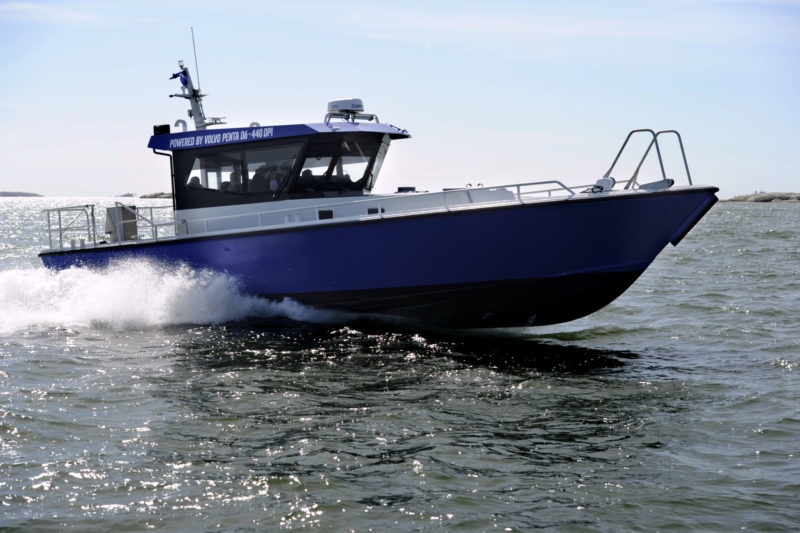Last Tuesday evening I was at the controls of my Honda GCV 160 5.5-hp lawnmower, tackling the grass in my backyard. On Friday morning, I was at the controls of a PTA70 880-hp workboat at Volvo Penta’s testing facility on the North Sea. That’s pretty cool, except for the grass cutting part.
With about 20 other maritime media types, I was invited to Volvo Penta’s Marine Test Center — Krossholmen — in Gothenburg, Sweden, for the unveiling of Volvo’s new and updated line of products, including the next generation D4 and D6 propulsion packages, upgraded IPS (Inboard Performance System) and the new DPI Aquamatic sterndrive.
In the morning we listened to presentations involving the new products, focusing on what Volvo's Johan Inden, president Region Europe, said is behind all of this equipment upgrading. “How do we build something that is robust and sustainable for our customer?” he asked. It is not a goal that can be reached today without keeping an eye on the future. It is a continuous quest to get better, to offer customers the best products Volvo can produce — then go on from there. Volvo wants to be automated, connected and electrified.
I’ve sat through many such presentations over 28 years of covering the marine industry. A couple of things struck me about these reports that made them different from so many others. First, the choreography was obvious. The presentations were handled in some cases by a two- or three-person team. Scripts had been written for each presentation and rehearsals would have been essential to deliver them as smoothly as they did. In addition, the passion the presenters had for these products was evident. They wanted us to like these products as much as they do. They’re proud of what they have created.
In the afternoon, we moved to the water. The Volvo people wanted us to try out the equipment to see for ourselves. To do so, they supplied three boats — the 13.5mx4m (44'x13') PTA70, sporting twin D6-440A engines, producing 440 hp at 3,700 rpm each; a 14.3mx4m (47'x13') Targa 44 equipped with twin D6-IPS650 engines, creating 480 hp at 3,700 rpm each; and the 11mx3.4m (36'x11') Sarga 33, packing a pair of D4-320 diesels, producing 320 hp at 3,600 rpm each.
We all agreed it was far more fulfilling than sitting in our offices. How often do you get a chance to pilot (“drive” as the Volvo personnel call it) a test boat in the North Sea? I remember sitting at the controls of the PTA70 wondering how I got here.
They were very keen on the control the pilot gets with the joy stick, but I was more interested in going fast. With the boat stopped, when I pushed the throttles to their stops, the two boats I drove got up on plane immediately — no hesitation.
Unfortunately, the day came to an end all too quickly — especially the afternoon — but we were treated to a great meal in a great setting before being taken back to our hotel.
My thanks to all the people at Volvo Penta for their hospitality and special thanks to Jim Rhodes of Rhodes Communications and Christine Carlson, Volvo Penta of the Americas, for being the most gracious of hosts.
Â



.JPG.small.400x400.jpg)

